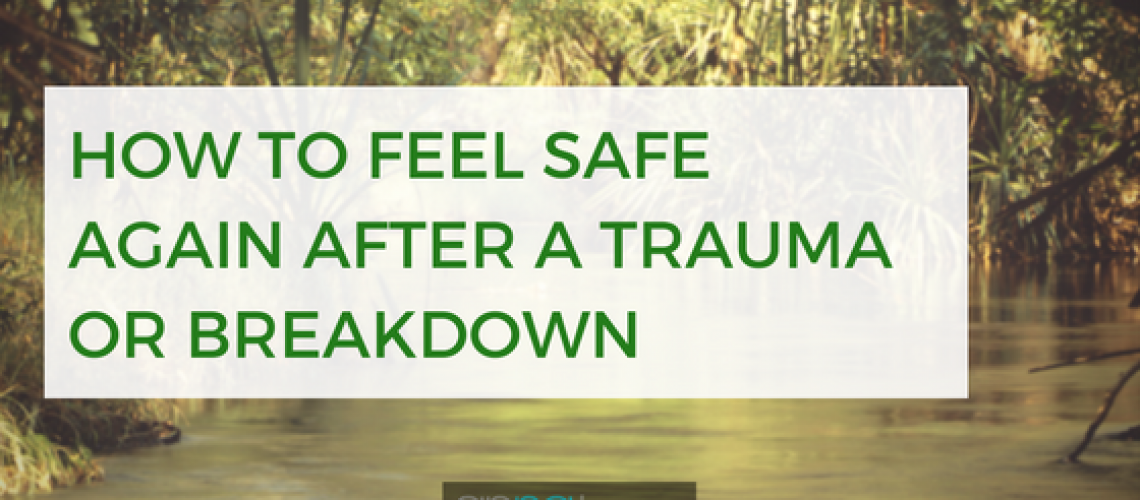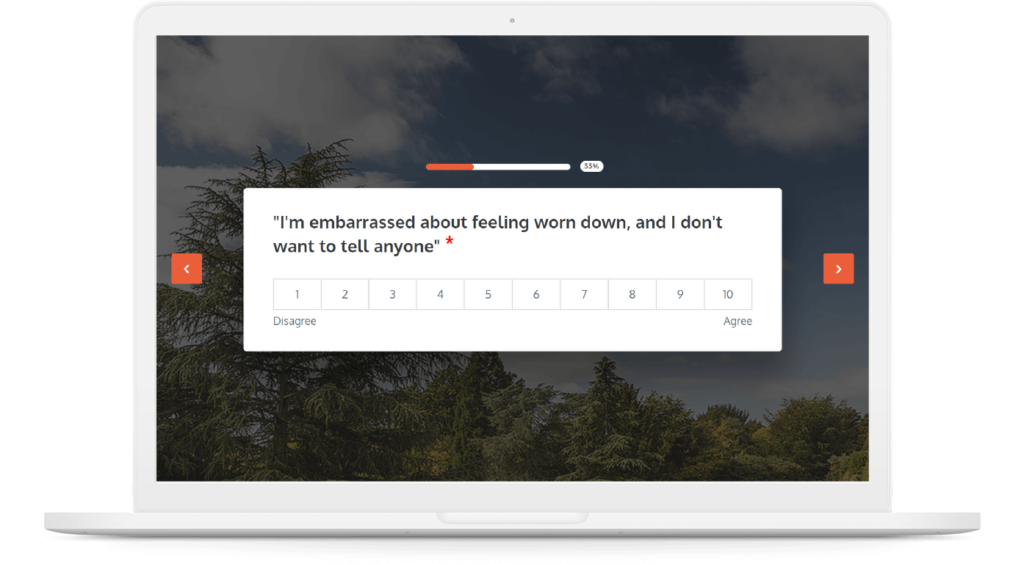After years of working with people who’ve experienced trauma, I know that getting back a feeling of safety is the underpinning of the next steps towards recovery.
Finding an external place of safety and an internal sense of safety can be difficult because in post-traumatic stress, the brain has absolutely no idea that it’s not within the trauma still, so the person feels unsafe all the time.
“Breathing is your best friend”
One thing to do is called “self soothing” and this works when you feel like you’re going into a panic, or you’re reacting to the adrenalin that’s flying through your system.
You can do some deep breathing; some self-reassurance that you’re safe. As you practice you can just slow your breathing and slow your pulse down a bit, and give you some mastery over what’s a very scary shot of adrenalin.
Our natural reaction in panic is to breathe faster and as we stumble to catch another breath we breathe faster and faster still as we panic more.
Here is simple ‘mobile’ breathing technique
Focus on something literally or in your mind’s eye. If you can, put one hand on the bottom of your sternum and slowly breathe in for 3 seconds and on the fourth second breathe out slowly. Massage or tap with your hand your sternum and this will calm you immediately.
This is a little technique you can do no matter where you are. Do this for 3 breaths, not too quickly and not too deeply, as it’s for calming and moving your attention to safety, and beyond anxiety.
It’s important that you don’t become anxious in using this technique well. It allows you the moment and the sensation and knowledge of soothing yourself and your system.
One of the key skills to be able to recover and look at traumatic material is the ability to look at what’s necessary to be able to calm yourself down. What we don’t want is that you are terrified about what you’ve been through and, on having to recall it, it traumatises you all over again.
Useful tips for calming
Take as much control of your environment as possible. The first thing I say to all of my clients is to reduce the external stimuli around them.
I might say to them “Watch less television, if any at all.” Maybe it’s worth just not watching any television for a while, unless its films that you know what the story is.
What the brain doesn’t need is something in a news item that you are not aware is happening and that is ‘fed’ to you unexpectedly. When you’re in an emotional state of ‘not being able to take anymore’ that’s exactly what it means. It means reduce the chance of anything else happening.
Unexpected news items can become what we call “a traumatic trigger’; a traumatic trigger being anything in your external environment that produces a reaction of stress and distress.
When your head is already full reducing the chances of filling the tiny little space that you have left to deal with every day is crucial, simple but crucial (see my previous blog for a better understanding of this ‘head space’).
So cutting out or down on television and newspapers are generally good for a while, even if that’s what you’re used to, it is a good way of reducing the stimuli and/or the fear of threat. It’s all part of the recovery project.
The other thing is to ask others in the family and around you to keep hold of certain information. If you have been through traumatic breakdown, the last thing you need is to know is what other people are thinking about it.
I also think it’s really important to reach out for help, and one of the things that I offer people is to speak with family members about what they can do to help you, what they can do to help reduce the overwhelm.
That’s what we’re talking about with safety; it is getting to a place where you’re not as overwhelmed as you were. You’re still not near 100%, but you’re not continually bombarded with new information to decipher.
These simple protective mechanisms are crucial in reducing the stress upon the already over-stressed mind and body. It is particularly useful for those looking after you to know these things and to reduce feelings of helplessness.
One common feature about people that have been traumatised is the real need to tell the story. Of course, you need to be careful of who you tell your story to.
I would say, by all means, tell the story as much as you want to if you feel you can utterly trust who you’re telling. It’s really important for us to be able to tell our story and not be silenced.
The other thing I say is to write. If you write in freehand, research suggests that it’s very healing.
So you might write pages and pages and pages of your story, how you feel, what you feel angry about, what you might do in the future, what you might never do, what you regret…
It doesn’t matter as long as you’re writing it down freehand and keeping that safe somewhere in a notebook so that doesn’t become something for other people to look at.
Another useful tip is to doodle. You don’t have to be good at drawing, but there’s something very relaxing to the brain, if we doodle slowly. If we doodle fast, that actually tends to be over stimulating.
It’s just a little bit of doodling, and the reason I call it “doodling” is because I want to encourage you to do it, but not think you’ve got to be good at art.
Another top tip is to remind yourself you’re safe, and remind others to remind you you’re safe now.
Get to the point where you accept that it’s really okay to get a ‘leg up’ in life, and that absolutely every single person at some point needs some help,
If you’d like to read about more ways to get back that feeling of safety after a trauma or breakdown, you can buy your own copy of my new book ‘Smile Again’ here or sign up for my latest updates at the bottom of this page.



